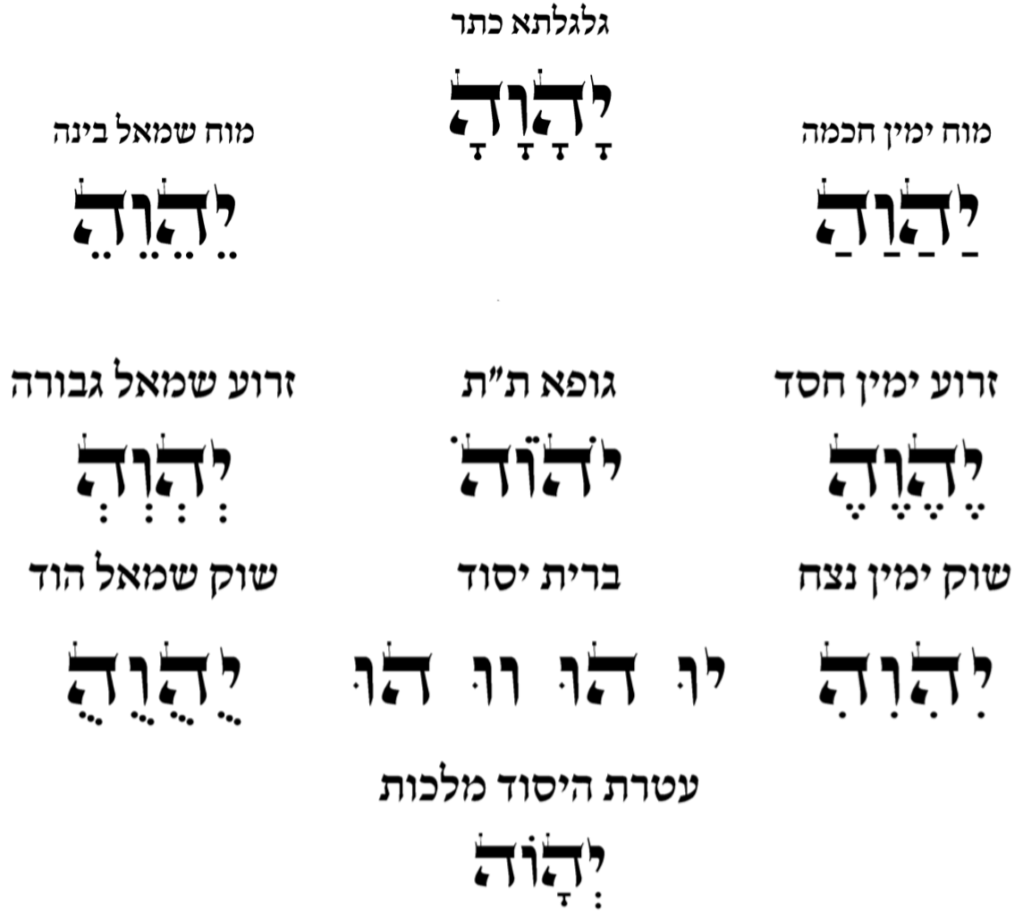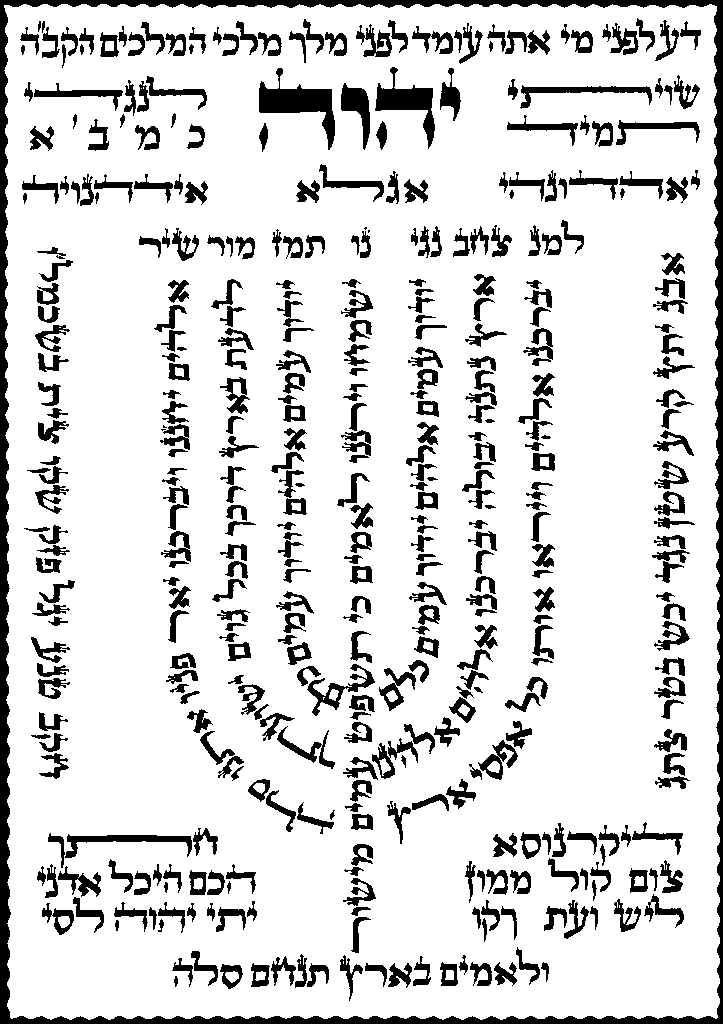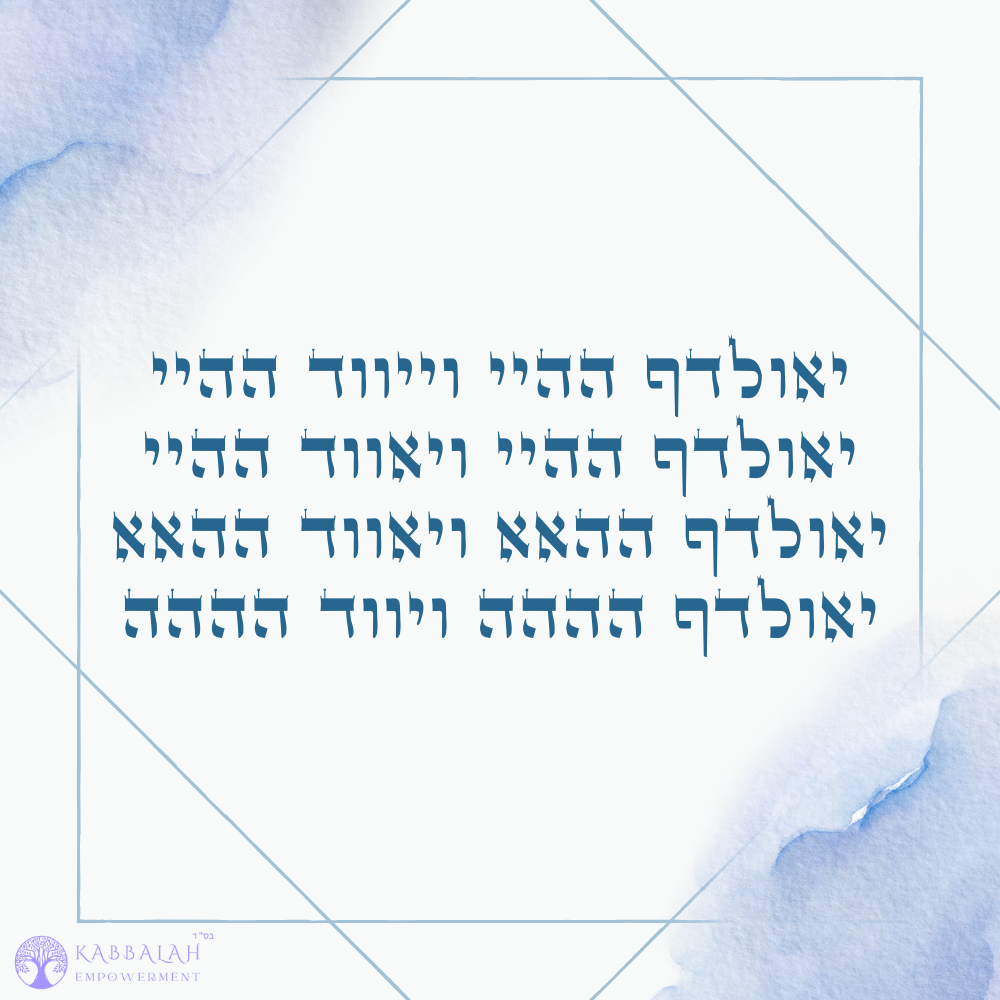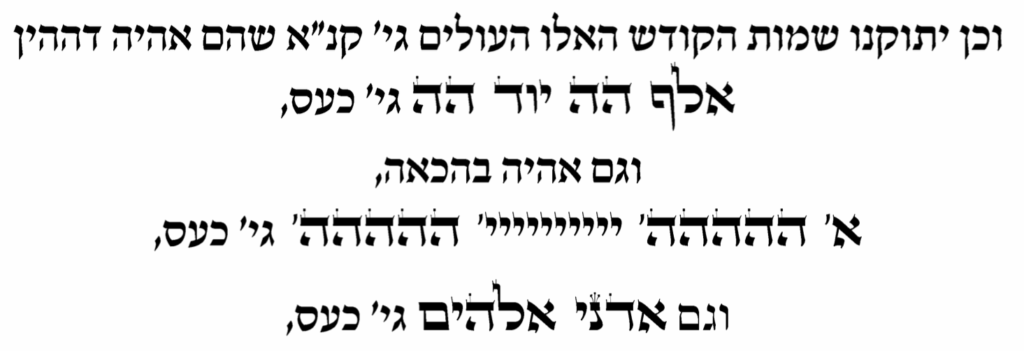Many people are not aware that Kabbalistic Meditation has been part of Jewish Tradition since the beginning of Creation
The path of Kabbalah aims to purify a person to his maximum potential. That potential is seldom reached except by real Mekubalim, but that reflects a person’s shortcomings, not a problem with the system itself.
Our consciousness reflects our soul. And there are levels upon levels upon levels that a person can access depending on how much he works on himself. The ultimate goal is, as Rav Chaim Vital writes in Sha’arei Kedusha: Dvekut (bonding) with Hashem. Being aware and keeping Hashem’s in one’s mind constantly to the point that you can begin perceiving him in your mind.
Now, there are many ways of achieving that but one of the most effective is Kabbalistic meditation through Yichudim and Kavanot.

This might seem like an oversimplification, but Kabbalah is essentially practiced by meditating on the divine names. Rav Chaim Vital already “adjures” us when learning Etz Chaim that if you start this study, then you should perforce also learn the Kavanot to meditate throughout the day, provided one follows the conditions (see below).
The unification of holy names called “Yichudim” is, in his own words on Sha’ar HaKavanot the highest form of service, even higher than Talmud Torah (including it as well, to be precise). Kavanot enables a person to most effectively rectify the spiritual worlds and himself since we are all connected to them, as the Arizal writes that “one should see himself as if he’s Z”A” of Atzilut.
Of course, one must “fill his belly” with the Pshat, Remez and Drash, but the study of Kabbalah (and meditation) cannot be relegated to those who have time to master the Talmud and Halacha (after 40 years, as many erroneously state). This is a consensus from many sources, such as the Ramchal, the Ramak, the Chesed L’Avraham, and other real Mekubalim of later generations.
But this perforce requires a much greater effort on a person’s part in being pure and keeping the Torah to its fine details. Observing all Mitzvot and dedicating oneself to studying the Torah becomes merely the “entry ticket for the game”, and not the end itself. This is a dramatic shift from the paradigm we are told that merely keeping everything makes you a Tzadik by default.
A person who wants to engage in them need to have a solid foundation of what he’s doing in the world (again, by keeping Torah and Mitzvot and doing Teshuva), otherwise, the energy he draws goes to the Sitra Achra (“the other side”, evil), besides causing a genuine form of spiritual Chillul Hashem. Besides Teshuva, a man should ideally immerse in the Mikvah prior to engaging in Yichudim and Kavanot, at the very least when he’s a Ba’al Keri for any reason.
Back to our subject: Kabbalah offers many forms of meditation techniques. Rooted in the foundation that Hashem can be accessed through focused meditation and contemplation, Kabbalistic meditation gives many powerful tools for those seeking to deepen their Hassagah (perception). In other words: Hashem is (almost) always available, we only need to open our minds and hearts.
Essentially every meditation touches on a very important principle, which is the capacity to use the power of imagination and detach oneself from physicality. The act of imagination is one of the tools the Kavanot and Yichudim. The more a person is focused and the longer he holds that focus, the stronger the effect.
And so, let us begin:
1. “Merkavah” Meditation
The Merkava meditation is so central and essential, that it’s present in many Sephardic Siddurim.
It can also be used anytime a person is praying, doing a Mitzvah, studying, or doing anything as long as he’s in a clean place and covered. It can also be used while meditating alone in a room. This simple Kabbalistic meditation helps a person imbue himself with Mochin (“divine intellect”) from the name YHVH.
The Arizal explains that one should imagine each of his limbs being filled with light from Atzilut using each of the divine names as below. This can be coupled with the saying “Hareini Mekavein La’assot Et Atzmi Kisse Umerkava LaShekhina HaKedosha” which is “I hereby intend to make myself a throne and chariot for the Holy Shekhina”.
For example, for the Sephira Keter (Crown, corresponding to the skull), he uses the name YHVH with Kamatz punctuation on all 4 letters. For Chochmah (Wisdom, the right side of the brain), use the Patach punctuation. For Bina (understanding, left side of the brain), it’s Tzereh. For each of the eyes, use 5 x the name YHVH and so on.
In doing so, he draws holiness to each of his limbs, purifying them. More fascinating than that, the Arizal says that if a person uses this meditation for the eyes, for long enough (I guess assuming he also guards his eyes), he can begin to see the spiritual reality. If he uses it in his ear, he can hear divine matters. If he uses on his mouth he can begin to say holy things. And so on.
Here’s the drawing of a simplified version.

2. Menorah Meditation (Psalm 67)
There’s a Midrash that David HaMelech would go to war with this drawing below etched on his golden shield. When he meditated on it, every one of his enemies would fall dead.
So, maybe you won’t go to war with a golden shield anytime soon. Nevertheless the Chidah writes that this is a great Segulah for protection. The Arizal also teaches one should say this Psalm 67 after Shacharit, Mincha, and Ma’ariv (after Aleinu L’shabeach), every single day of the year, including Yom Kippur, Rosh Hashana, and so on.
Here’s the drawing:

3. Unification for the elevation of the soul
This is a Yichud that is given in Sha’ar Ruach HaKodesh. It consists on uniting the names A”b and Kasa”h in one line, Sag and Kasa”h in the second, Ma”h and Kama”g in the third and Ba”n and Kana”h in the fourth.
This might be a bit advanced for most people, and I can’t explain the details here but basically, we are unifying the “feminine” names of Hashem (EHYH) with the “masculine” ones (YHVH) through this. Even if you don’t understand what is being done, you can still benefit from it. Like the Merkava Meditation, it can also be used anytime of the day.
To explain in Rav Chaim Vital’s words:
To purify the soul and illuminate it, and to increase its strength and enlightenment in order to bind it above in the upper holiness during the night after dawn, when you rise to engage in the predetermined meditation with these holy names that have been arranged according to God’s will, and then engage in meditation. And so, at every hour and moment throughout the day, focus on the meditation, and as you are accustomed to focusing in meditation, so will the enlightenment penetrate your soul. How good and pleasant it will be before your eyes all day long. These are the intentions that enter and illuminate the soul greatly, and these are the names:
And this is the artwork I made on it:

4. Meditation against anger
Many mefarshim write that anger and arrogance are the absolute worst of all character traits.
The Rambam teaches on Mishneh Torah that one needs to distance himself from them to the extreme since, contrary to all other traits, they have no positive uses. in Sefer HaChezionot (Book of Visions), the Arizal severely warned R’ Chaim Vital of ever getting angry, even for the sake of Mitzvot or studying Torah when he saw the Ibbur of King Chizkiyahu left his student.
Anger, no matter how small, can damage a person’s soul . I don’t remember exactly who said this, but one who breaks an item in anger has all his merits erased, since this is considered a full-fledged offering for Avodah Zarah to the Samech Mem. So it’s really severe.
This Kabbalistic meditation works well on its own as well as when a man goes to the Mikvah. It’s simple and can also be used anywhere. It’s based on the Gematria of the word for anger, כעס which is 151, which is also Gematria Mikveh (מקוה). 151 is the numerical value of the name Kana”h and the Arizal writes that one who wants to rectify his anger should fast 151 days (or, of course, do the Pidyon through money, which is what most people do). It’s also the Gematria of the names Ado-ai (65) + Elokim (86) and also EHYH with each letter multiplying itself.
Here’s the meditation:

5. Mishnah Meditation
This is probably one of the least dangerous techniques… or most, depending on how you use it. I felt some effects when trying it on Shabbat a few years ago, but won’t give much details here.
Here’s how it goes according to Rav Chaim Vital in Sha’arei Kedusha (ch. 4):
Begin your meditation by finding a quiet space, wrapped in a prayer shawl (Tallit) and sit with your eyes closed. Allow your consciousness to transcend the physical, as if your soul is leaving your body and ascending to the heavens. Once you have reached this state of divestment, choose any Mishna that resonates with you and recite it repeatedly, pronouncing each word clearly and without skipping any letters.
As you recite the Mishna, intend to connect your soul with the soul of the sage who taught it. Visualize your soul becoming a chariot, a vessel for the sage’s wisdom to manifest within you. Allow your innermost self to recite the Mishna, with the intention of bringing forth the sparks of your soul and connecting them with the teachings of the sage.
To achieve this connection, focus on the idea that your mouth is simply a conduit, a vessel through which the words of the Mishna can flow. Visualize the voice that emerges from your mouth as being filled with the sparks of your inner soul, which are reciting the Mishna. In this way, the sage’s soul can manifest within your own, and his teachings can guide you on your spiritual journey.
At some point during your meditation, you may feel overcome by exhaustion. If you are worthy, the soul of the sage may come to reside in your mouth, speaking through you and answering any questions you may have. This is the mystery of the verse, “The spirit of G‑d spoke to me, and His word was on my lips”. (Samuel II 23:2)
Rav Chaim Vital
This can be really strong and, if a Tanna doesn’t come to teach you, you still get to memorize a Mishnah!
Concluding Remarks on Kabbalistic Meditation
While these techniques look “cool” and are powerful tools for spiritual growth and transformation, it is important for practitioners to approach them with caution and purity. As with any spiritual practice, the potential benefits of Kabbalistic meditation must be balanced with a healthy dose of caution and discernment, and for men, going to the Mikvah every day.
As I wrote before, someone who’s not Torah observant should not meditate on them at all. Doing so can bring a lot misfortune, since all the light he brings goes to the Sitra Achra (the “other side”, evil). This is particularly true for men who are Ba’al Keri (had seminal emission) of any sort and haven’t gone to the Mikvah.
Please keep in mind that these meditations do not exempt anyone from observing Torah and Mitzvot to the letter, according to the Shulchan Aruch. One cannot be holy, though one can certainly be deluded into thinking he is by meditating and experiencing “the higher worlds”, and this might also be another illusion from the Sitra Achra. Great Kabbalists can meditate deeply and even perform astonishing feats (like having “out of body” experiences at will) but are also grounded on the basic observance and study of Torah, including the Pshat.
Another potential danger of Kabbalistic meditation is the temptation to become overly focused on the attainment of mystical experiences or the acquisition of spiritual powers (which can come, mind you). This can lead to a distortion of the true purpose of their practice, which is ultimately to cultivate a deeper connection with Hashem and to serve Him with greater love and compassion. Remember: the goal is Dvekut which, in turn, rectifies a person from within.
Another potential danger of Kabbalistic meditation is the risk of spiritual bypassing, or using spiritual practice as a means of avoiding or suppressing difficult emotions or experiences. Rather than using meditation to escape from the challenges of life, it is crucial to use these practices to face and transform our pain and suffering, and use them as fuel for spiritual growth. Sounds a bit fluffy, but merely learning these techniques is not enough, they need to have a positive effect.
Finally, if something seems off and you begin seeing things, it’s best to stop and seek a real Mekubal to ask for advice.
In order to truly connect Hashem, it is essential to cultivate positive character traits such as humility, compassion, and honesty, and to avoid engaging in unsavory habits like indulging in physical pleasures, looking at improper places, wasting time and so on. Success depends on how much we work on ourselves, but mainly prayer and Rachamim (compassion).
The purpose I made this article is to inspire people to know how deeply Kabbalah (and the Torah) can go. I think it’s important people don’t think that Torah mastery is studying Shas a few times in your life and patting yourself on the back for knowing all there is. Or that the Pshat and Mussaf is all there is. Or that once you already keep the Torah, you are a Tzadik who’s assured to receive Olam Habah.
The Torah is infinitely profound because most insights are not revealed, they are perceived in one’s heart and mind, and cannot be shared due to their depth. What we have revealed nowadays is a mere drop of all there is truly.
All the Avot and Imahot, prophets, sages and Kabbalists were incredibly powerful meditators. Take all you see here, multiply by a factor of anywhere between a thousand and a billion, and we may have an idea of the mind potency of a shoemaker during the Second Temple era (we’ll need another post to explain why this is so). Nevertheless, it’s precisely because we have so many obstacles in our generation that this study is so vital, for someone who’s willing to put in the effort.
Ultimately, Kabbalistic meditation can offer a powerful tool for spiritual growth and transformation, but it must be approached with genuine awe and love for Hashem. By staying grounded in the Torah, and avoiding the pitfalls mentioned, these tools can deepen a person’s Avodat Hashem to levels never imagined.







